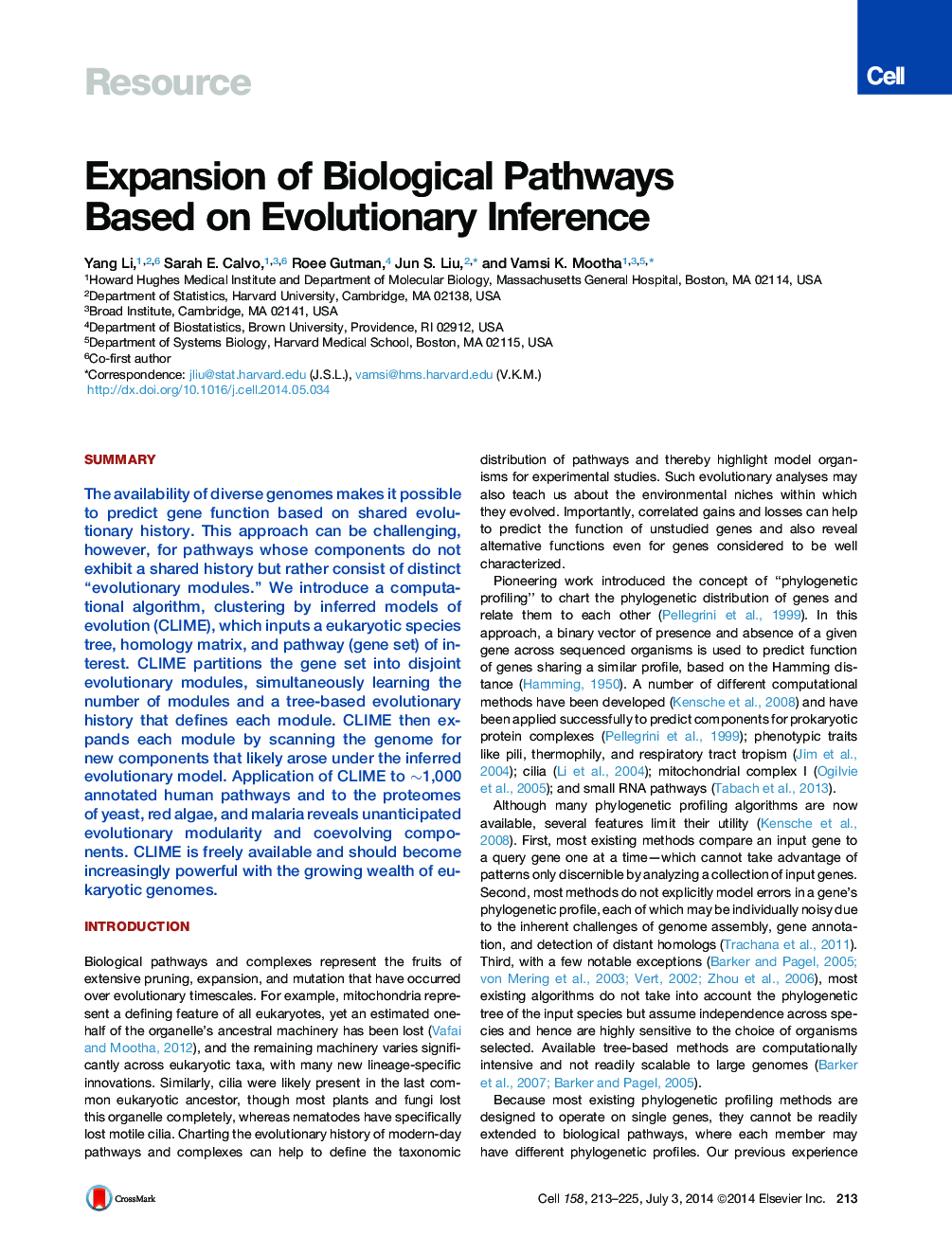| Article ID | Journal | Published Year | Pages | File Type |
|---|---|---|---|---|
| 2035299 | Cell | 2014 | 13 Pages |
•A tree-based algorithm (CLIME) clusters gene sets based on evolutionary history•CLIME predicts new members of a pathway based on shared inferred ancestry•Entire genomes or focused pathways can be explored•CLIME software and a web-based interface are freely available
SummaryThe availability of diverse genomes makes it possible to predict gene function based on shared evolutionary history. This approach can be challenging, however, for pathways whose components do not exhibit a shared history but rather consist of distinct “evolutionary modules.” We introduce a computational algorithm, clustering by inferred models of evolution (CLIME), which inputs a eukaryotic species tree, homology matrix, and pathway (gene set) of interest. CLIME partitions the gene set into disjoint evolutionary modules, simultaneously learning the number of modules and a tree-based evolutionary history that defines each module. CLIME then expands each module by scanning the genome for new components that likely arose under the inferred evolutionary model. Application of CLIME to ∼1,000 annotated human pathways and to the proteomes of yeast, red algae, and malaria reveals unanticipated evolutionary modularity and coevolving components. CLIME is freely available and should become increasingly powerful with the growing wealth of eukaryotic genomes.
Graphical AbstractFigure optionsDownload full-size imageDownload high-quality image (279 K)Download as PowerPoint slide
